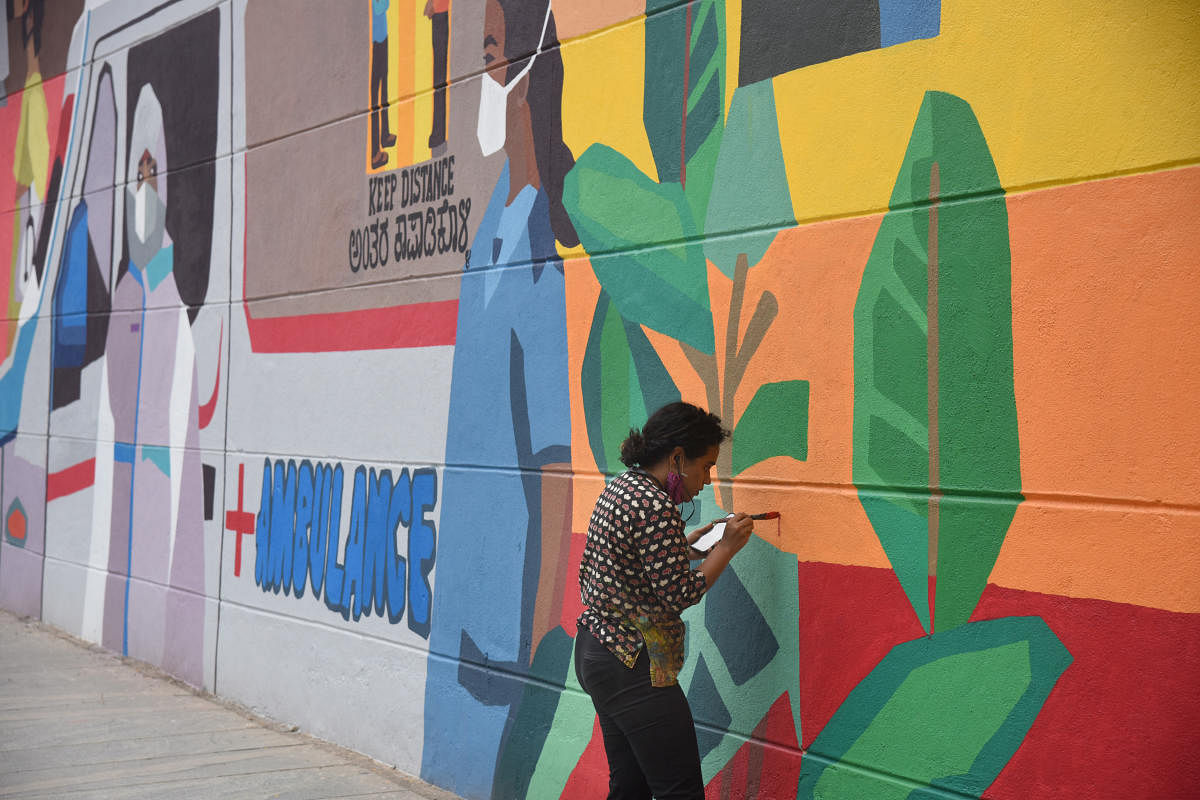
What do you get when art, health, social and environmental concerns come together? Vibrant murals on public walls, life-size portraits of waste workers and brightly coloured garbage trucks! These are part of a novel initiative by Hilldaari, a collective project focusing on sustainable waste management solutions across cities. Using art as an aesthetic interface for messaging, visibility and for effecting social transformation, Hilldaari is changing the urban landscape, one city at a time.
Targeting tourist cities that have a large influx of floating population and issues with resulting waste, the main idea of the project involves creating awareness regarding ideal waste management practices. The initiative is adopting art as an aesthetic component and has made it an integral aspect of its strategy. Hilldaari is currently being implemented in several cities and is at various stages of completion.
Street art in public areas that have high footfalls — sidewalks, walls alongside central roads and market places in Dalhousie, Nainital, Mussoorie, Ponda (Goa), Mahabaleshwar and other cities — has either been completed or are ongoing. The street art has piqued interest in the community and passersby, and has also resulted in high visibility on social media. The brightly coloured murals in Dalhousie range from stories regarding waste segregation in the miniature style of Pahadi art, to celebrating Covid superheroes and a ‘fun and play’ theme in a park, each rendered in a unique style with different narratives.
Hilldaari has been collaborating with contemporary artists on the one hand and local artists on the other to reflect local art and culture, along with global sensibilities. For instance, in Dalhousie, Pahadi miniature artist Parikshit Sharma painted an entire wall using the miniature style and motifs, juxtaposing traditional precise lines of the figures and other unique Pahadi elements with contemporary storytelling. At other locations, Delhi-based artists Achintya Malviya and Arun Sharma painted the images, and involved children from the community for the playground wall.
Realistic rendering
In Nainital, the project opted to paint life-size portraits of waste workers on the walls at one of its selected locations, an acknowledgment and recognition of their contribution to the city. This series of street art, with its realistic rendering done by Achintya Malviya, has instilled a great sense of pride in the workers. Accompanied by name tags of the workers and appropriate messages to inculcate responsible waste management habits, the artworks combine visual and textual elements for effective communication.
In another effort to create mobile street art, a few garbage vans have been painted and messages regarding waste segregation have been thus reinforced in this manner. These add much colour and visibility to the otherwise drab collection vehicles and draw attention as they move around the city.
The idea of using street art in a concerted and strategic manner, to beautify urban spaces and to ignite social awareness, can gather momentum as it gets replicated across cities, and could become a significant tool to effect change.
The author is a Bangalore-based art consultant, curator and writer. She blogs at Art Scene India and can be reached on artsceneinfo@gmail.com
Dab Hand is your fortnightly art world low-down. It will tell you all about what fresh ideas are out there, what to collect and what to admire from afar. And, of course, what not to.